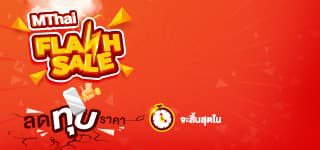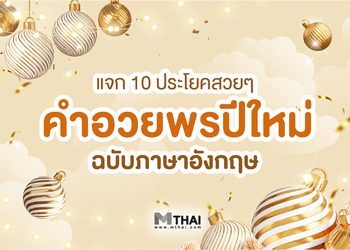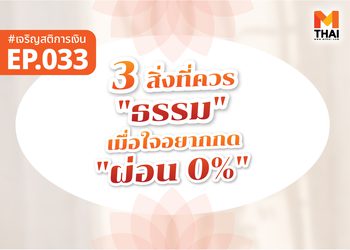รังนก (Edible bird’s nests) ถือว่าเป็นอาหารที่มีคุณค่า เพราะเชื่อว่ามีสรรพคุณช่วย เสริมระบบภูมิคุ้มกัน ทำให้ ร่างกายแข็งแรง รวมถึงช่วยบำรุงผิวพรรณ และช่วยชะลอความแก่1,2,3,4,5,6

จากความเชื่อในประโยชน์ด้านต่างๆ ของรังนก ทำให้มีการศึกษาองค์ประกอบของรังนกและพบว่ามีทั้งไกลโคโปรตีน โกรทแฟคเตอร์ ซึ่งโปรตีนที่พบในรังนกมีคุณสมบัติพิเศษ เพราะเป็น ไกลโคโปรตีน ที่มี NANA นานะ (N-Acetyl-Neuraminic Acid) หรือเรียกว่า กรดไซอะลิค (Sialic Acid)2,3,7 เป็นสารกลุ่มคาร์โบไฮเดรตที่เกี่ยวข้องกับ ระบบภูมิคุ้มกัน ซึ่งพบได้น้อยมากในโปรตีนชนิดอื่น เช่น เนื้อไก่ เนื้อเป็ด และ เนื้อปลา เป็นต้น โดยในรังนกจะพบปริมาณนานะประมาณ 9% ในเนื้อไก่ และเนื้อเป็ด พบนานะน้อยมากพบเพียง 0.02% และ ในเนื้อปลาแซลมอน พบเพียง 0.01%2,4,8,10,11
NANA สารสำคัญในรังนก คืออะไร?
หัวใจสำคัญ เสริมสร้างระบบภูมิคุ้มกัน ของโครงสร้างพิเศษในรังนกแท้
การศึกษาวิจัยพบว่า NANA คือสารสำคัญในรังนกที่ช่วยทำให้มี ภูมิคุ้มกันสามารถยับยั้งไม่ให้ไวรัส เช่น ไวรัสไข้หวัดใหญ่ เข้าสู่เซลล์ ด้วยกลไกการจับกับเชื้อไวรัสโดยตรง และการขัดขวางการจับตัวระหว่างเชื้อไวรัสกับเซลล์เม็ดเลือดแดง ทั้งนี้นักวิจัยพบว่ารังนกที่มีปริมาณ NANA สูงก็จะมีความสามารถในการต้านไวรัสดีขึ้น13
และยังพบว่าไกลโคโปรตีนในรังนกทำให้เซลล์เม็ดเลือดขาวเพิ่มจำนวน ดังนั้นรังนกจึงนับได้ว่า เป็นสารสำคัญที่ช่วยเรื่อง ภูมิคุ้มกัน และช่วยในการต้านไวรัส นอกจากจะช่วยในเรื่อง ภูมิคุ้มกัน แล้ว รังนกก็ยังมี อีพิเดอร์มอล โกรท แฟคเตอร์ (Epidermal Growth factor (EGF) ซึ่งเป็นเปปไทด์ที่มีโครงสร้างเหมือนกับ EGF ที่อยู่ในคน มีฤทธิ์กระตุ้นการแบ่งตัวของเซลล์ชั้นนอกสุด ช่วยเสริมสร้างและซ่อมแซมเซลล์ผิว กระตุ้นการสร้างเซลล์ผิวใหม่ ซึ่งมีผลช่วยยังยั้งการทำงานของ เอนไซม์ ไทโรซิเนส (Tyrosinase) ที่เกี่ยวข้องกับการสร้างเม็ดสีผิวเมลานิน ซึ่งเป็นสาเหตุทำให้ผิวหมองคล้ำ11 14
เรียกได้ว่า รังนกแท้ มีประโยชน์ต่อสุขภาพ โดยเฉพาะ ช่วยเสริมสร้างภูมิคุ้มกัน ทำให้ร่างกายแข็งแรง อย่างไรก็ตาม ปัญหาที่เกิดขึ้นคือรังนกแท้มักมีราคาที่สูง รวมถึงผลิตออกมาได้น้อย ทำให้มีรังนกปลอมในตลาดมีอยู่จำนวนมาก ดังนั้นในการเลือกซื้อรังนกจึงควรพิจารณาจากผู้ผลิตและผู้จัดจำหน่ายที่มีมาตรฐาน น่าเชื่อถือ ในกระบวนการตรวจสอบวัตถุดิบรังนกที่ใช้ในการผลิต และได้รับการรับรองมาอย่างยาวนาน เพื่อให้เราได้ของที่มีคุณภาพและดีต่อตัวเราที่สุด
เอกสารอ้างอิง:
- Thorburn C. 2014. The Edible Birds’ Nest Boom in Indonesia and South-east Asia. Food culture society. Vol.17, Issue 4; 535-554.
- Chua L.S. and Zukefl S.N. 2016. A comprehensive review of edible bird nests and swiftlet farming. Journal of Integrative Medicine. Vol. 14, No.6; 415-428.
http://dx.doi.org/10.1016/S2095-4964(16)60282-0 https://www.academia.edu/36861320/A_comprehensive_review_of_edible_bird_nests_and_2016_Journal_of_Integrative
- Tai S.K., Koh R.Y., Ng K.Y. and Chye S. M. 2017. A Mini Review on Medicinal Effects of Edible Bird’s Nest. Lett Health Biol Sci. Vol. 2, Issue 1; 65-67. DOI: 10.15436/2475-6245.17.016.
- Hamzah Z., Ibrahim N.H., J S., Hussin K., Hashim O. and Lee B.B. 2013. Nutritional properties of edible bird nest. Journal of Asian Scientific Research. 3(6); 600-607.
- Zhao R., Li G., Kong X.J., Huang X.Y., Li W., Zeng Y.Y. and Lai X.P. 2016. The improvement effects of edible bird’s nest on proliferation and activation of B lymphocyte and its antagonistic effects on immunosuppression induced by Drug Design, Development and Therapy. 10; 371-381.
- Marcone M.F. 2005. Characterization of the Edible Bird’s Nest the “Caviar of the East”. Food Research International. 38, 1125-1134. http://dx.doi.org/10.1016/j.foodres.2005.02.008
- Daud N.A., Yusop S.M., Babji A.S., Lim S.J., Sarbini S.R. and Yan T.H. 2019. Edible Bird’s Nest: Physicochemical Properties, Production, and Application of Bioactive Extracts and Glycopeptides. Food Reviews International. 1-19.
https://doi.org/10.1080/87559129.2019.1696359
- Li H. and Fan X. 2014. Quantitative analysis of sialic acids in Chinese conventional foods by HPLC-FLD. Open Journal of Preventive Medicine. 4(2); 57-63.
https://www.scirp.org/journal/PaperInformation.aspx?PaperID=42604
- Fucui M. and Daicheng L. 2012. Sketch of the edible bird’s nest and its important bioactivities. Food Research International. 48(2); 559–567.
https://www.sciencedirect.com/science/article/abs/pii/S0963996912001895
- Chan K., Zheng K.Y., Zhu K.Y., Dong T.T. and Tsim K.W. 2013. Determination of free N-acetylneuraminic acid in edible bird nest: A development of chemical marker for quality control. The Journal of Ethnobiology and Traditional Medicine. 120; 620-628.
- Lun Chan G.K., Fai Wong Z.C., Ching Lam K.Y., Wai Cheng L.K., Zhang L.M., Lin H., et al. 2015_ Edible Bird’s Nest, an Asian Health Food Supplement, Possesses Skin Lightening Activities: Identification of N-Acetylneuraminic Acid as Active Ingredient. Journal of Cosmetics, Dermatological Sciences and Applications. 5; 262-274.
- Guo C.T., Takahashi T., Bukawa W., Takahashi N., Yagi H., Kato K. et al. 2006. Edible bird’s nest extract inhibits influenza virus infection. Antiviral Research. 70; 140–146.
https://www.ncbi.nlm.nih.gov/pubmed/16581142
- Kong Y.C., , K H Chan K.H. and Ng M.H., et al. 1986. Potentiation of mitogenic response by extract of the swiftlet’s (Collocalia) nest. Biochem Intern. 13;521-531. https://pubmed.ncbi.nlm.nih.gov/3790144/
- Kong Y.C., Keung W. M., Yip T.T., Ko K.M., Tsao S.W., Nget M.H. 1987. Evidence that Epidermal Growth Factor is present in swiflet’s (Collocalia) nest. Comp. Biochem. Physiol. 87B(2);221-226. https://www.ncbi.nlm.nih.gov/pubmed/3497769














